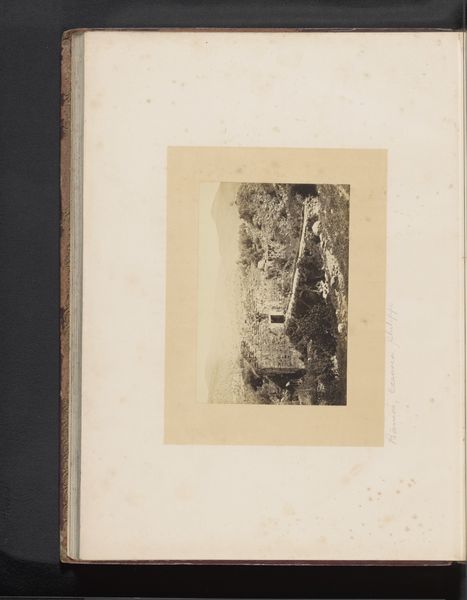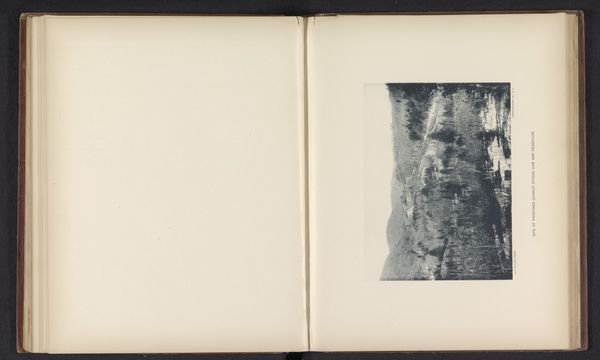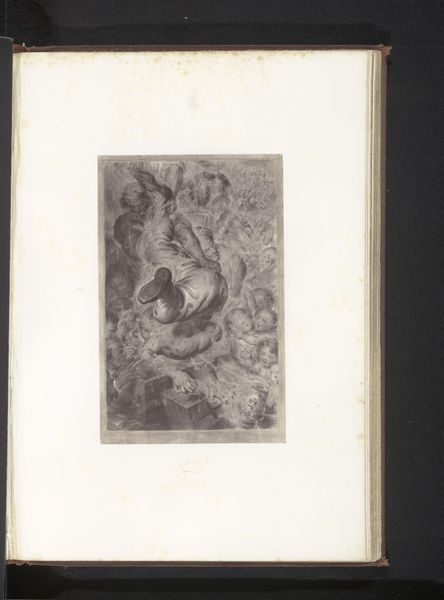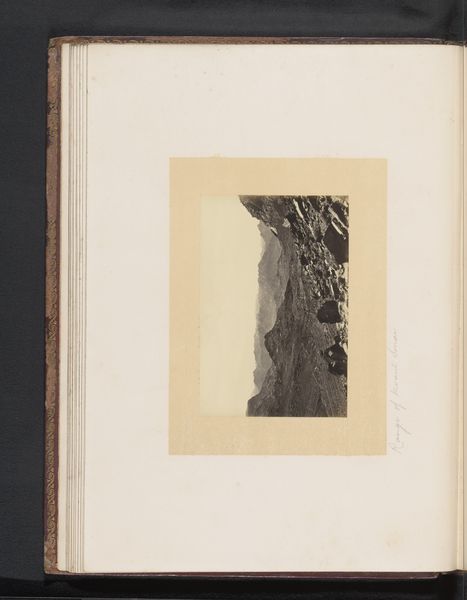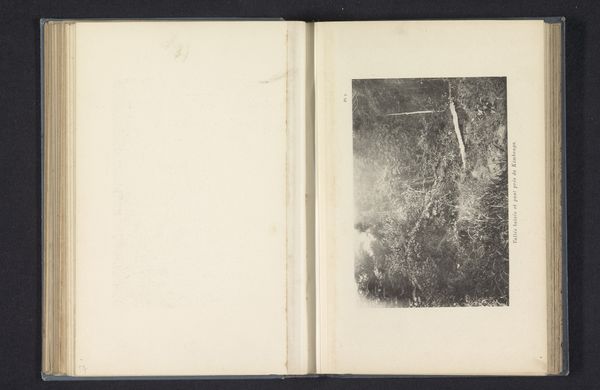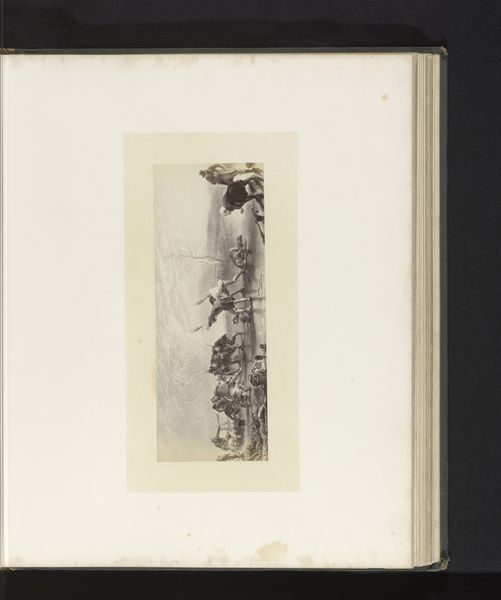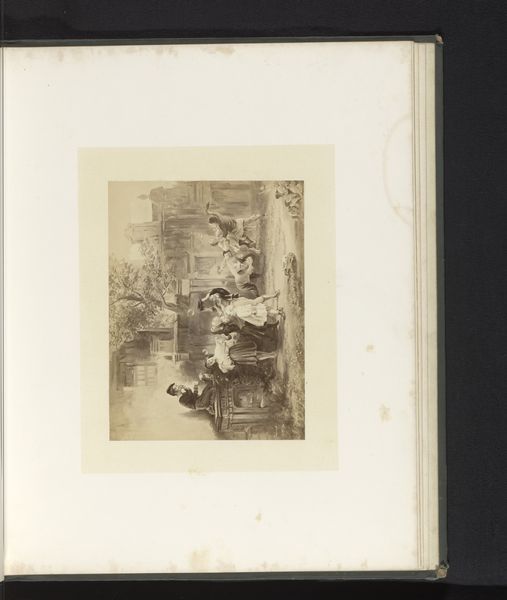
Dimensions: height 101 mm, width 153 mm
Copyright: Rijks Museum: Open Domain
Curator: “Man Vissend bij een Waterval in Lake District,” or “Man Fishing by a Waterfall in the Lake District,” a gelatin-silver print from Garnett & Sproat, made sometime between 1857 and 1867. It’s remarkably serene. What do you make of it? Editor: It definitely has a romantic feel with its misty quality. What do you see in it? Curator: The presence of that solitary figure is deeply compelling. Consider the broader context: this was during a period of significant social and environmental transformation in England. The Industrial Revolution was in full swing, driving people to cities and altering the landscape irrevocably. Does this image seem like a form of resistance to you? A yearning for a simpler time, for untouched nature? Editor: I see what you mean. The fisherman, almost dwarfed by the waterfall, could represent humanity's relationship with nature, or maybe the impact we have on it, even then. Curator: Exactly. And photography itself, as a relatively new medium at the time, played a crucial role in shaping perceptions of nature and rural life. It was accessible. Do you think that the photograph could reflect anxieties about progress? The photographic image makes tangible the concept of capturing, controlling even, that which is not manufactured, made in industry? Editor: Definitely, it’s hard not to see a bit of critique there. Sort of like saying: Remember this? Remember what is being lost in industrial progress? Curator: Precisely. Think of the Pre-Raphaelites and their focus on romanticized landscapes in painting. This photograph resonates with that sentiment, adding another layer to our understanding of the period's complex relationship with nature. Considering our modern perspectives on the climate crisis and land usage, it is really quite relevant still. What is your take away from this? Editor: This photo is more than just a pretty landscape. It's a commentary on its time. It gives new layers to what the Romantics were doing with landscape painting!
Comments
No comments
Be the first to comment and join the conversation on the ultimate creative platform.
